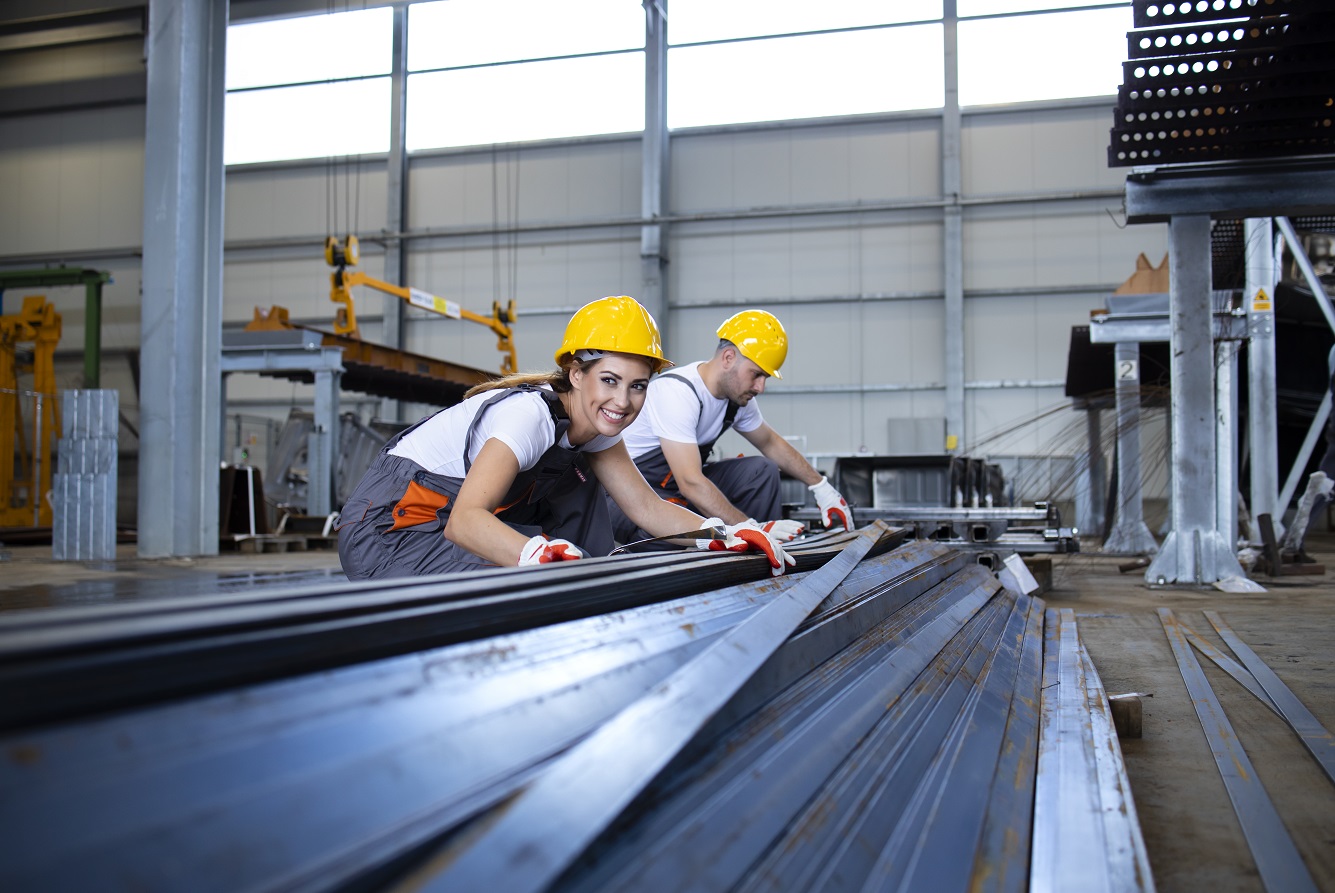

Metal fabrication is the distinct process that renders a valuable metal for further processing or transforming into finished products. It includes metal cutting, sawing, shaping it through bending and shearing, and making it ready for assembly through punching or notching. Different metal fabrication processes are used in multiple industries, whether it is a small consumer goods industry or a heavy machinery manufacturing industry. Metal fabrication plays a vital role in modern manufacturing.
This blog will teach you about standard metal fabrication processes and applications.
Here are some metal fabrication processes that are widely used in the manufacturing industry:
Cutting is the most common metal fabrication process, which involves splitting metal into smaller shapes. Different methods of cutting metal include shearing, sawing, and laser cutting.
Sawing: A powered saw is used to cut metals of different sizes and shapes in metal sawing.
Shearing: In metal shearing, a metal sheet is sheared using two blades. The upper blade comes down on the metal sheet with shear force and separates it from the more extensive section.
Laser Cutting: High-powered lasers make precise cuts in a metal. Laser cutting is effective on various thicknesses and metals, including steel, iron, aluminum, etc.
Machining is the process wherein unwanted material is removed to get the desired shape. There are different forms of machining:
Milling and turning: Milling refers to removing unwanted metal parts by running the cutting tool against the stationary workpiece. Turning refers to rotating the workpiece against a fixed cutting tool.
Drilling: Drilling makes holes in a metal to render it valid for assembly. Multiple drill bits create specific holes applicable for various purposes.
Forming refers to bending metal to an angle, creating a specific shape. It can be achieved through two methods:
Bending: Metal sheets are turned into specific shapes using tools such as press brakes. This process is essential for creating angles and curves.
Rolling: Metal is passed through rollers to achieve consistent thickness and curvature, often used in producing pipes and tubes.
Folding is preferred to shape a metal, but it isn’t always helpful. The process of welding is used to join two metal pieces together. Different welding techniques are employed to join metal pieces together. MIG and TIG welding are common in precision applications, while stick welding is known for its versatility and strength.
Stamping is similar to punching but doesn’t create a hole or separate the metal. Instead, it forms an indentation on the metal in the form of letters or images. This process involves forming metal into desired shapes using a die and a punch. It is widely used in the automotive and aerospace industries for creating components such as car body panels and aircraft parts.
Casting is the process of pouring molten metal into a mold. The metal is heated to such an extent that it melts. Once in the mold, the metal is frozen or cooled until it is hard. The process is fit for mass production.
Casting is a hazardous process and must only be performed by skilled engineers and workers.
Extrusion pushes a workpiece through or around an open or closed die to create cross-sectional uniform shapes. The resulting shapes are usually cylindrical pipes or wiring.
Forging is the process of manually molding a metal into a desired shape. The metal is heated to the point that it can be easily shaped. Then, it is shaped using hand tools, such as a hammer. It is a popular metal fabrication technique, especially for designing custom weapons.
Metal fabrication involves working with various metals to create multiple products. The choice of metal for fabrication depends on the requirements of the project. Steel, aluminum, copper, brass, bronze, titanium, nickel alloys, stainless steel, etc., are some of the metals that undergo metal fabrication.
Metal fabrication has an extensive range of applications across various industries, and some of the most notable ones include:
The advancing technologies are surely going to impact the metal fabrication industry. Here are some upcoming trends that the metal fabrication industry will witness.
Adopting industry 4.0 practices such as the Internet of Things, automation, and data analytics is changing the industry. Smart factories are replacing the traditional ones, offering quality and improved efficiency.
The use of advanced materials, including high-strength alloys, composites, and smart materials, is on the rise. These materials offer improved performance characteristics, reduced weight, and increased durability.
3D printing is transforming how metal parts are fabricated. It allows for complex and customized components to be produced with reduced waste.
Metal fabrication is not a concept, but it is a combination of several techniques, methods, and processes, which are based on the project requirements, enabling the creation of a wide range of products that impact our daily lives. The above-mentioned processes are not exclusive but only a glimpse into the vast metal fabrication industry.
Que: What are some common metal fabrication processes?
Ans: Some common metal fabrication processes are cutting, stamping, punching, notching, sawing, bending, welding, extrusion, casting, folding, forging, etc.
Que: What is the role of CAD/ Computer-Aided Design in metal fabrication?
Ans: CAD software is used for designing and modeling metal components. It enables precise and detailed planning, essential for achieving accurate and efficient fabrication.
Que: What is the difference between welding and soldering?
Ans: Welding refers to melting and fusing two metal pieces. On the other hand, Soldering uses a lower-temperature light filler material to join two metal parts.